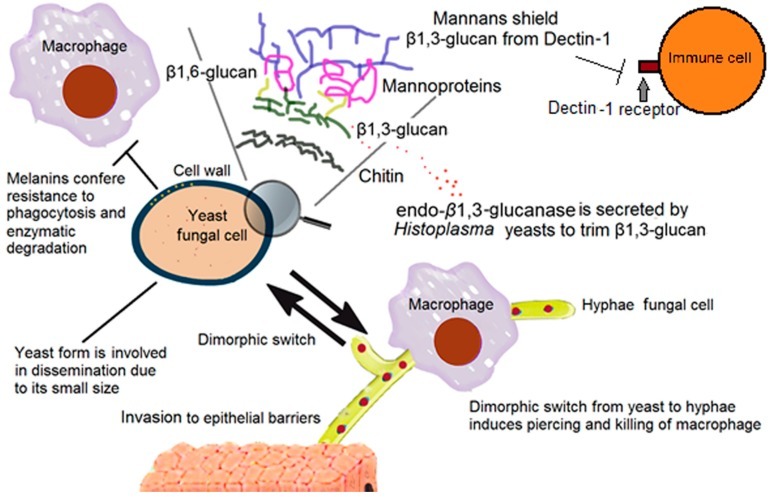Our DNA is akin to a computer program. Like computers, human viruses can infect our biological programs causing chaos in our operating systems.
The results for the unlucky human can lead to illness, madness, disease, and even death.

Humans have developed strategies to fight back against these parasites using our immune system but these little creatures have found ways to hide from our immune defenders to avoid proper recognition and thus interfering with the host protective mechanisms. The entry of the pathogen into the host cell is initiated by viral adherence to the cell surface in which it parasites nutrients and minerals from the host further weakening its immune system.
In February, an international research team led by Prof. Oliver Werz of Friedrich Schiller University, Jena, released research showing how the mold/fungus Apergillus fumigatus tricks the immune system allowing the parasite to develop into a potentially deadly infection.
Aspergillus uses a lethal mycotoxin called gliotoxin, which is responsible for the pathogenicity of the mold’s immunosuppressive effect. Werz said,”This interrupts communication between the immune cells and destroys the defense mechanism. As a result, it is easy for spores – in this case the fungus – that enter the organism to infiltrate tissues or organs.” (1)
One of the ways that these parasites defend themselves from the human immune system is with “biofilms”. These biofilms are three-dimensional structures formed by microbes encapsulated in a matrix of self-produced extracellular polymeric molecules that could adhere to biotic or abiotic surfaces. Mature biofilms have been shown to be resistant to the attack of the immune systems’ neutrophils, representing an important innate immune evasion. (2)
Researchers from Stanford University in California are finding that a bacterium responsible for approximately 10% of U.S. hospital-acquired infections uses a virus to trick a person’s immune system into ignoring it.
The virus, known as a phage, infects the Pseudomonas aeruginosa bacterium, fools our immune system into going after it instead of its microbe host and frequently resists antibiotic treatment. (3)

The image above shows the components of the cell wall that help fungi to evade the immune system. The outer layer of mannans of many fungal cells shields the highly immunogenic β-1,3-glucan from Dectin-1 receptor, precluding the activation of effector mechanisms in immune cells. In the case of Histoplasma cells, endo- β-1,3-glucanase is released to trim β-1,3-glucans from the cell and prevents its recognition via Dectin-1 receptor.
Melanin is distributed into the cell wall of some fungal pathogens and contributes to resistance to phagocytosis and enzymatic degradation by macrophages. Finally, the reversible, dimorphic switch between yeast and hyphae confers special traits to each form that helps the pathogen to disseminate and invade the host. (2)
SOURCES:
1. How a fungus can cripple the immune system
2. Fungal Strategies to Evade the Host Immune Recognition
3. Nature.com

Moe is the founder of GnosticWarrior.com. He is a father, husband, author, martial arts black belt, and an expert in Gnosticism, the occult, and esotericism.







![How Claudius, the second of the Romans who came into Britain, brought the islands Orcades into subjection to the Roman empire; and Vespasian, sent by hint, reduced the Isle of Wight under the dominion of the Romans [44 AD] | Book 1 | Chapter 3 How Claudius, the second of the Romans who came into Britain, brought the islands Orcades into subjection to the Roman empire; and Vespasian, sent by hint, reduced the Isle of Wight under the dominion of the Romans [44 AD] | Book 1 | Chapter 3](https://www.gnosticwarrior.com/wp-content/plugins/contextual-related-posts/default.png)
